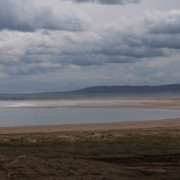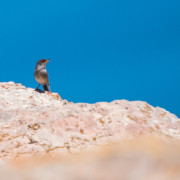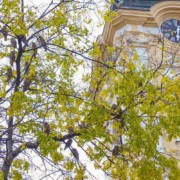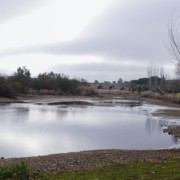I don’t really class myself as a twitcher – someone who races off to chase down a rare bird at the drop of a hat. I used to twitch in my younger days as a birder. I thought nothing of jumping into someone else’s car (I didn’t have one of my own and besides, I hadn’t passed my test yet) to motor for miles on the off chance of glimpsing a rarity that would have invariably gone missing by the time I arrived. Therefore, I was often disappointed. After a while I likened twitching to being like a series of bad one-night stands. You get excited about seeing the bird. You get to the site and if you are lucky enough to see the bird you think to yourself, ‘was that it?’. Then you leave feeling cold and empty.
There are three bird species in the world that I have vowed never to twitch: Sabine’s Gull, Snowy Owl and Red-flanked Bluetail. My plan was to find them all myself.
To date, I have only found Sabine’s Gull – the first an out of place immature in southern Chile in 2017. When I heard the other day that a Red-flanked Bluetail had been found just 20 minutes from my home in Mérida, Extremadura I was torn. Do I twitch it or wait for a self found one?
Well, I gave into temptation and spent four hours searching for this jewel – the first for Extremadura. I failed miserably. My fate was sealed it seemed. There is a moral to the story: I have to find my own birds.
In June of this year, I was birding in the Cáceres Province of Extremadura in Spain. This amazing region for birding is split into two provinces: Cáceres in the north and Badajoz to the south. I was visiting some of the lesser-known sites like Charca de la Atalaya outside the town of Aldea del Cano looking for waders and waterfowl. I found 13 Spotted Redshanks there rubbing shoulders with Ruff and plentiful Common Sandpipers. I had just left the gorgeously wooded Valle del Jerte, an internationally famous cherry growing area. It’s a lush area with many walking trails and interspersed with villages to stop at for slap-up lunches. Western Bonelli’s Warblers sang from the woodlands and the fast-flowing river running through the valley sometimes attracts Dipper. Common Buzzard and their distant relation, the Honey Buzzard, breed plus, there is always the chance of bumping into a Goshawk. I actually saw a sole Bonelli’s Eagle that turned out to be the first record of this impressive predator at this site in over 25 years! Yes, I was having a nice day.
Then the news broke of Extremadura’s third ever Western Reef Heron. It had been found near Plasencia, in a roadside pool outside the village of Oliva de Plasencia. I broke my journey to chance a look at this visitor that is normally to be found in West Africa, the Red Sea and the Persian Gulf. This egret is a handsome bird whose wholly dark plumage is only relieved by its white chin. It was supposedly showing very well, but that doesn’t mean anything when you are traveling to a site that you have not been to before. I drove through the village of Oliva de Plasencia and the road out of town was flanked by a series of small lakes some fringed with vegetation. As I slowly drove along the road I saw plentiful Cattle Egrets alongside Grey Herons, Great and Little Egrets. But crucially, no dark herons. As I approached the end of the stretch of watercourses I saw a dark figure standing by the water’s edge. It was the Western Reef Egret (or Heron, as it is also known). I watched it from inside my car on the roadside for 30 minutes with absolutely nobody else around me. Perhaps twitching in Spain has its benefits. The egret didn’t do much other than to stand looking around. I was happy though. My mind wandered. What other rarities are lurking unfound in this vast land?
Many thanks to the Diputación de Cáceres www.dip-caceres.es








